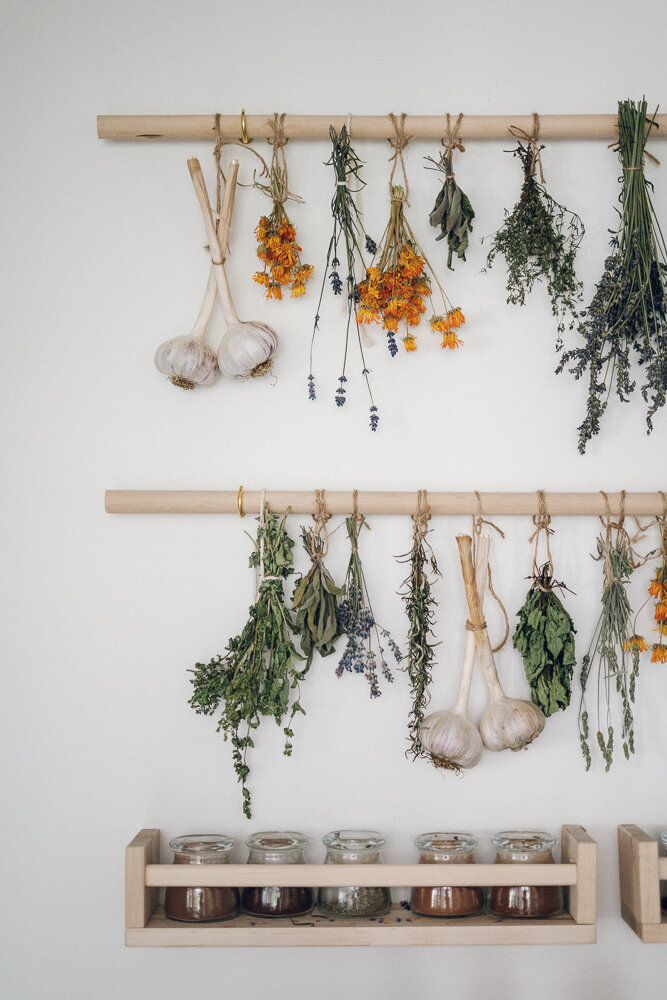Learn how to plant a garden in a small space so every single person can grow some of their own food, no matter what your space limitations may be, and yes I am looking at you city apartment dwellers.

How To Plant A Garden In A Small Space: Our Patio Garden
When it comes to planning a garden, most people think that if they don’t have a certain amount of space or land then they just can’t have a garden and this couldn’t be further from the truth.
After 7 years of living in the city I became pretty efficient at learning what plants can grow in small spaces, and how a little creativity can go a long way when it comes to learning how to plant a garden in a small space.
And while today we have more space to work with, I still find that those years of being forced to work through the spacial limitations I had made me a much better gardener willing to think outside the box, which in my opinion is an essential skill worth honing when it comes to gardening.
When we were living in Vermont was rented a home that didn’t have any land but was built on the side of a riverbed with a really beautiful river and mountain view. While we didn’t have any space to dig a garden into the ground, we did have a large patio that we decided to turn into a patio garden.
Because we were renting we couldn’t make any permanent changes to the patio or damage it in anyway, which made me realize how perfect this option could be for other renters especially in cities.

Designing Our Patio Garden
When it came to the garden design for our small space garden I knew that we wanted to maximize the space as much as possible (since we were limited to only the patio), while also making sure that the garden complimented our outdoor living space and didn’t overrun it.
Goal One: Make The Garden A Part Of Our Outdoor Living
Often I find that most edible gardens are set back in some part of a yard and usually aren’t enjoyed the way they can be if they are designed into your outdoor living areas.
This is something I wish more people would think about, even if it is just for a kitchen garden because having your garden feel like a natural part of your outdoor living space is such a great way to enjoy your hard work, and spark conversations when friends and family come to visit.
So when it came to our garden design, I knew that I wanted to work our dining and living spaces into the garden, which resulted in separating the garden into two long sections that separated our dining table and lounge space, with a long walkway down the center.
This means that no matter where you are on the patio you are surrounded by plants, which is just how I like it.
Goal Two: Maximize Space By Growing Up & Down
We opted to also utilize the 10 foot rock wall we have on one side of the patio as well by growing morning glory flowers up it with garden wires, and placed nasturtiums in window box containers at the top of the rock wall that will drape down. This creates a really beautiful contrast to the rock wall and is one of my favorite parts of our garden design.
Luckily, our patio gets incredible full-sun, which is ideal for growing vegetables and most herbs, as well as some partial sun that works well for leafy greens like lettuce that love cooler conditions and a little shade.
This was pure luck since there really isn’t anything you can do about your sun exposure, which will always be one of the most important aspects of any gardens success.

Choosing Our Containers/Raised Beds
While in the past we simply grew all of our plants in different sized pots (which totally works and can look beautiful!), this year we wanted something more structural that would define our different patio spaces, and allow us to grow even more plants more efficiently.
For these reasons, we decided to go with raised beds, but since we were using our patio for our garden we needed the beds to be elevated off of the ground. While we thought about building them ourselves, after ran the numbers we realized that it wouldn’t be that much more expensive to purchase them, and I had had my eye on the beautiful elevated cedar beds at Gardeners Supply (where we get almost all our gardening supplies).
I have honestly always loved the look of elevated beds, not to mention it makes gardening so much easier when you don’t need to bed over to pick anything. So in the end, we opted to go with an elevated bed design using two 4×8 foot beds and two 2×4 foot beds both from Gardeners Supply, which we absolutely love! Since our elevated beds are roughly 1 foot deep and 3 feet high they are perfect for growing almost anything we could want.
We also used two long benches as plant stands for a lot of our potted plants, a large galvanized tub for our lettuce, and a wide assortment of clay pots for growing most of our herbs. The combined look of the elevated beds and clay containers really makes for a really lovely layered vibe that I personally love.
Watch Out For “Leaching” In Your Patio Garden
“Leaching” is something I had absolutely no idea happened until we designed our raised bed garden design on our current patio. Typically, most gardens are placed over dirt or grass, which means that any “runoff” from the soil in your planters or raised beds just goes right into the soil below and isn’t noticeable — this isn’t the case when you are planning a garden over a stone or wooden space.
With any organic potting soil or compost there is going to be some degree of organic matter in the soil that “leeches” out especially when you experience periods of heavy rain. Since elevated beds or pots are usually set above or on patios this can cause some staining of your stone or wood
For our garden, our elevated beds were raised above a slate stone patio, which unfortunately is very porous and can stain easily. When we received some heavy rains this spring we did experience some “leaching” from the elevated beds soil onto the patio, but after a few heavy rain storms the leaching went away and we were able to remove the stains it left on our patio with a little baking soda, water, vinegar, and castile soap.


Steps For How To Plant A Garden In A Small Space Of Your Own
So now that you know how we went about designing our small space garden, it’s your turn! While every single space is going to be different when it comes to planning a garden design, there are a few steps that absolutely everyone should take when deciding how to plant a garden in a small space that will thrive.
Step One: Measure Your Space
Whether you have a patio, balcony, window boxes, or a large property to work with measuring out your space is always going to be the essential first step for any garden design. This will allow you to decide just how much you can fit, what size planters or pots to choose, and what plants you can realistically grow.

Step Two: Make A List Of What You Would Like To Grow
Now that you know how much space you have to work with it’s time to think about what you want to grow.
This will also depend on how much light your space gets and what growing zone you happen to live in. Personally, I like to start by making a big list of what I would like to grow and then narrow it down from there based on sunlight needs, space needs, and your growing zone.
For instance, we chose not to grow zucchini and squash because they require so much space, and preferred to allocate the space we do have for things we enjoy more or are more expensive to buy at the farmers market, like tomatoes and herbs.

Step Three: Think Outside The Box
If anything inspires you from seeing our garden design I hope it is that your garden does not need to fit into the usual square box. You can plan a unique garden that is vertical, entirely in pots, overflowing in window boxes, or raised above a patio like ours. There are no rules, and when it comes to gardening you really won’t know what works until you try.
So choose to think outside the box and consider the visual esthetic and use of your garden when you are planning your design.
How do you want to experience it on a day to day basis? What plants do you want easy access to near your kitchen? What flowers can you grow that are beautiful to look at and also edible? Could you install a trellis for flower and beans to climb? Can you hang plants from hanging containers that could grow down? The sky is the limit.

Step Four: Choose The Right Raised Beds Or Containers
If you want to use raised beds in your small garden then I am 100% with you! Raised beds are a wonderful way to grow your own food and look really esthetically pleasing. But when it comes to choosing the right raised bed there are a few things you have to think about.
- Space: How much space do you have? Can a raised or elevated bed be worked into your small garden or should you really opt for containers instead? Gardeners Supply also has a lot of great compact elevated beds for small space gardens. If a raised bed won’t work in your space, think about opting for a large planter like this one for tomatoes that comes with a built in cage for support.
- Weight: Raised or elevated beds will hold a lot of soil, which means a lot of weight. Make sure if you are placing them on a deck or balcony that their weight is safe for the structure you are placing them on.
- Size: Feel free to mix and match different size raised beds and containers to best fit your space and your plants needs. Often the prettiest gardens will use a varied mix of different containers, beds, and trellises for a layered more natural look.
Step Five: Work Your Garden Into Your Outdoor Living Space
I often wonder if more people chose to work their gardens into their outdoor living spaces if more people would actually choose to grow their own food. Gardening and especially vegetable gardening is a skill that really takes so much trial and error and guidance to learn, and one way to teach more people about gardening is to show them.
That is why I LOVE having our garden as a part of our outdoor living space because it has encouraged so many really wonderful conversations among our friends and family members, and we also can keep a much easier eye on it for pest monitoring and troubleshooting issues as they come up.





















